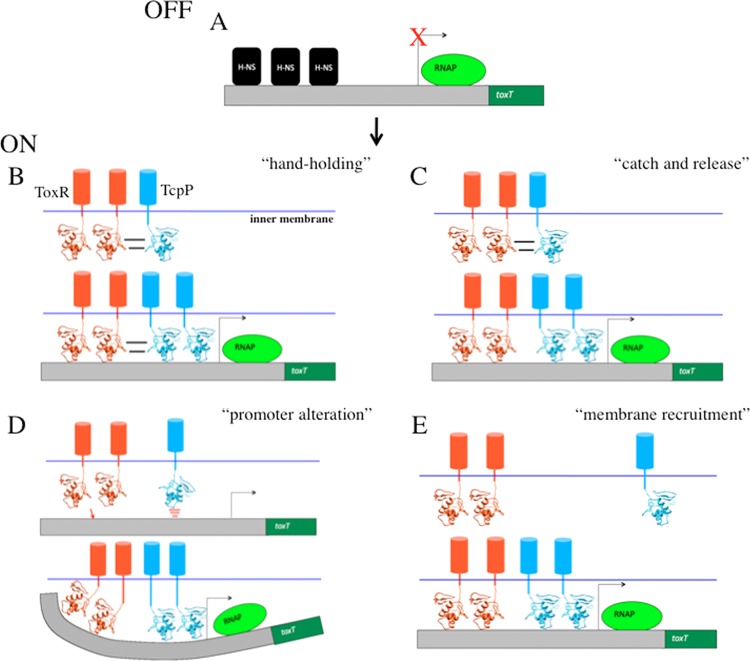Fig 5.
Models for the role of ToxR in TcpP-mediated toxT activation. (A) As previously described, the toxT promoter is repressed by H-NS (19). (B) In the “hand-holding” model, ToxR and TcpP interact in the inner membrane of V. cholerae as previously described (29), and then ToxR escorts TcpP to the toxT promoter where ToxR relieves H-NS repression and maintains interaction with TcpP while TcpP stimulates transcription. (C) In the “catch and release” model, ToxR also interacts with TcpP and recruits TcpP to the toxT promoter, but upon DNA binding by ToxR, H-NS is displaced and ToxR releases TcpP so TcpP can bind the TcpP-binding site 30 nucleotides downstream of the ToxR-binding site (25). (D) In the “promoter alteration” model, interaction between ToxR and TcpP is not required for toxT activation; rather, ToxR binding to the toxT promoter displaces H-NS and alters the toxT promoter architecture such that a normally weak TcpP-binding site is altered in some way to facilitate enhanced TcpP binding, thus allowing TcpP-mediated activation of the toxT promoter. (E) In the “membrane recruitment” model, again interaction between ToxR and TcpP is not required, but the role of ToxR is to simply recruit the toxT promoter to the membrane where TcpP has easier access to its DNA-binding site. This model takes into account the fact that TcpP binding to the toxT promoter requires higher concentrations of V. cholerae membranes than ToxR binding (6) and the fact that membrane localization was previously shown to be required for ToxR to facilitate TcpP-mediated toxT activation (26).

